W A N T E D ! ! !
Search for Brian Boru's Sword

A campaign has been launched to find Brian Boru's missing sword. It was last seen in the 1960's when it was in the ownership of the Vernon Family of Clontarf.
It would appear that it was stolen from them. The sword was passed down to them in 1855 from the estate of the Marchioness of Thomond.
A replica sword commissioned by Ted O'Brien, from the O'Brien Chapter in Australia is the focus of the communications campaign to find the whereabouts of the family sword.

A letter campaign to the Taoiseach (Prime Minister) of the Republic of Ireland has begun. A sample letter can be seen here. More information about the Taoiseach can be seen at www.taoiseach.gov.ie/index.asp .
If you have any information on the where-a bouts of this sword, please contact the Webmaster. Information will be forwarded to the proper contacts.
Below are several pictures showing the detail of the sword.
The replica made by Ted O'Brien is beautiful and Ted should be commended for this accomplishment.
You may purchase a replica of this sword at CH Hutchinson Armors.
The current recognized replica of the Brian Boru Sword.

66 inches (5 feet, 6 inches) in length.
It is a two handed sword dating from the 10th century.
It is a lewing sword, designed to cut off as many heads as possible in one fell swoop. Legend says that Brian Boru cut off 100 Viking heads at the Battle of Limerick in 978 AD (before breakfast).
The replica above is based on the original below which has disappeared.
The picture below is Lord Inchiquin, 16th Baron Inchiquin is holding the original about 1930.
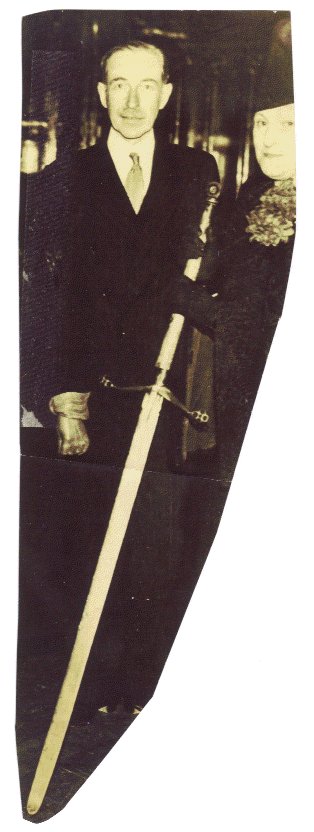
|
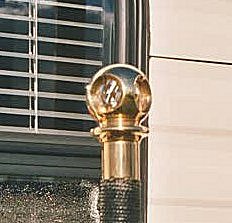 |
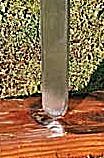 |
| The Pummel at the end of the hilt is a bronze, gold plated sphere 1-3/4" spherical and has a gemstone set into it. The sphere has four holes at 90 degrees to each other rather like a divers helmut. The gem can be seen inside the four portholes. |
The rounded tip. This sword was used for swinging, not stabbing.
|
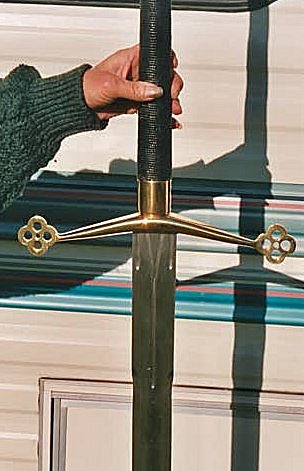 |
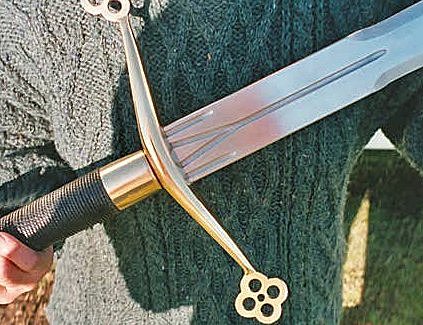 |
| The crossguard is angled and it is debatable whether the four leaf clovers at the outer ends are in line with the angle of the guard (12 degrees) or horizontal as they are made here. The original was quite damaged. One reason they are made horizontal is that the sword predates the Scottish claymor by about 200 years and the Scots would have to be "different" and they made the four leaf clovers in line with the angle of the cross guard. They were also angled a bit more at 15-20 degrees, and the grip was for 2 hands only , whereas Brian Boru's was long enough for four hands but was beautifully balanced. |
The fullers are the grooves near the crossguard - their sole purpose is to give the blade to tang and flexibility (swords had a habit of breaking off at the crossguard). The fullers are, in some swords, the whole length of the blade to give them flexibility. They are sometimes erroneously termed blood grooves but they are to impart flexibility only.
The handle is wood under the cotton cord or leather thong cover. Research indicated trade with Spain in the 8th century in cotton and flax - the marks on the handle indicate some form of string or leather thong binding - not a leather sleeve - this was not used on swords until the 12th century - modern swords have ray skin (stingray that is!) and have the appearance and feel of ivory.
|